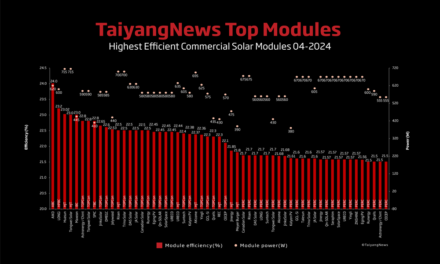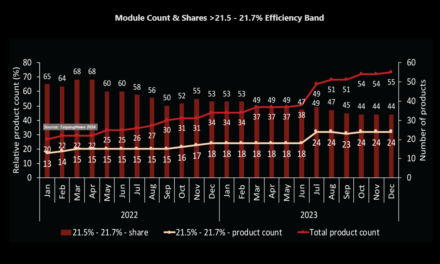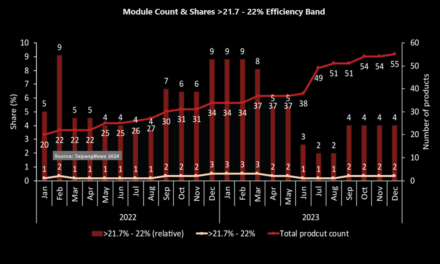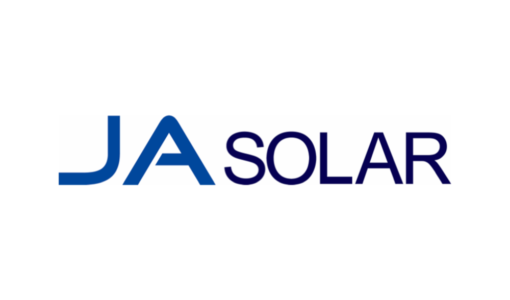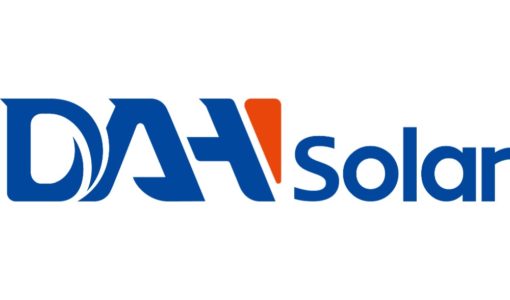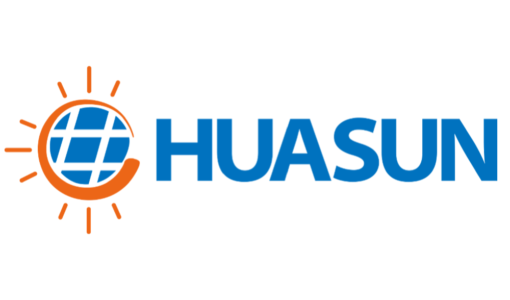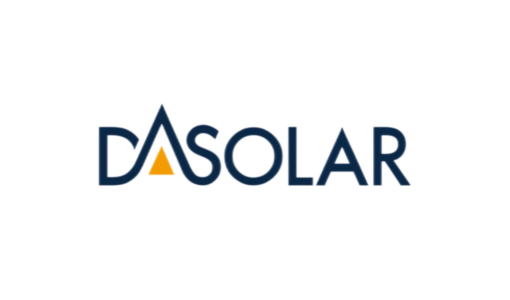- The April list presents 3 new modules with increased efficiency from JA Solar, TW Solar, and DAS Solar, and one from Risen with improved power rating, while product updates can be seen from DAS Solar and Trina Solar
- Major efficiency jumps are recorded for Trina Solar’s TOPCon module with 22.3% and DAS Solar’s PERC product reaching 21.7%
- Total product count of top solar modules remains at 37 and number of companies at 24
The April update of TaiyangNews’ top solar modules listing has been maintained with a few changes in detail. Aiko’s spectacular record efficiency of 23.6%, which was the highest for any commercially available module in the previous edition, is still at the top (see Record Efficiency Solar Module from Aiko). Similar to the previous edition, there are still 37 products listed, but there have been a few changes in detail. Our April edition features 4 new products and 2 product updates, all from companies that were also part of the previous edition. TW Solar, which introduced its TOPCon module last month, is now promoting a slightly more efficient product with 22.5% efficiency, an improvement of 0.1% compared to the previously listed product, but with a lower power output of 580 W. We have also included JA Solar’s globally available 580 W module, which comes with an efficiency rating of 22.4%. DAS Solar has updated its website that reflected considerable changes in its TOPCon and PERC product portfolio. We have listed the company’s TOPCon module, which has an efficiency rating of 22.3%, and an updated PERC product, which has an increased efficiency rating of 21.7%, up from 21.5%.
Trina Solar has made a significant upgrade to its Vertex S+ module, which now boasts an efficiency rating of 22.3%, up from 21.9%. Risen Energy’s newly listed PERC module comes with different configuration; the latest product is built with 132 half cells, while previously listed product is based 130 of 1/3 cells, thus with a higher power output of 675 W. These changes have also impacted the rankings. Please note that the data for the top module listings was collected in the first week of April 2023.
For background
Efficiency and output power are the 2 key characteristics of a solar module. While there are several means to improve module power such as employing larger cell sizes or integrating more cells into a module, it’s the efficiency that truly speaks about the ability of the solar device to convert sunlight per area into power. That’s why this list includes only the highest efficient solar modules.
TaiyangNews has been covering the efficiency progress of solar modules through its annual reports on Advanced Module Technologies starting from 2017 and its annual conference as of 2020. Our latest Solar Module Innovations Report was published in Aug. 2022 (download report here) and our most recent annual conference on Solar Module Innovations took place on Jan. 31, 2023 (access the presentations here). However, in the quickly changing solar sector a lot is happening over the course of a year – and to keep our readers updated about the efficiency progress more frequently, TaiyangNews has started this monthly column on commercial TOP SOLAR MODULES at the beginning of 2022.
Methodology
Before going into details, here is some background on the methodology and selection criteria: Since module efficiencies have been improving considerably in recent years, more than 0.5% average per year, to make the list rewarding for technically advanced products we put the minimum efficiency to be included at 21.5%. We have listed only commercially available top modules from each cell technology stream of one module maker. For example, if a company is offering 2 different product streams based on PERC technology that have more than 21.5% efficiency, then only the product with the higher efficiency is considered for this list. But if a module maker is offering, for example, products based on PERC and TOPCon that have efficiencies of 21.5% or above, then both the products are listed here. Efficiency is the only criteria for ranking in the list (whenever available in the specs, we have used two digits after the comma for efficiencies, otherwise one). However, as we see more often products with the same efficiency, in this case power determine the order. And when efficiency and even power are the same, we have listed the manufacturers in alphabetical order.
A commercially available module is considered a product for which the complete data sheet is listed on the module producer’s website. The efficiency and power data listed here is taken from the data sheet available on the respective company’s website. This also means we have not included any new product announcements without final technical data published as their modules specs often differ considerably from the products that are finally available for purchase, and some products presented at trade fairs are not even seeing the commercial light at all. Finally, we are only listing modules based on in-house produced cells of a respective module manufacturer, which means modules using externally sourced cells are not featured in this TOP MODULES list. If module specs listed on websites seem to have ‘conspicuously’ high efficiencies, we ask for certificates from third-party test institutes among other information before we include a product in the list. A case in point, Aiko not only provided the test certificate, it also revealed the shipment data and details of projects where the module have already been used in solar installations.

Results & Changes
Meeting these criteria, according to our research (status first week of April 2023), a total of 37 products from 24 companies have made it to the current list – the same number as the previous month. Though the product count did not change, a few new products replaced the old ones, and a few products were listed with updated specs. As a result the rankings of majority of solar panels has changed. Aiko’s ABC module series introduced last month still stays at the top with an efficiency of 23.6%, the module is rated with up to 610 W power coming from 144 of M10 half cells. Aiko has not specified the exact cell architecture, but it’s based on n-type wafers and characterized as ABC that is also the designation of the module series that stands for All Back Contact.
The IBC modules from SunPower spin-off Maxeon have been the most efficient products in the market for many years. This has changed in November 2022 with the world’s largest wafer and module maker LONGi Solar having introduced a new module series called Hi-MO6 with 22.8% efficiency that is at the same level as Maxeon’s products. LONGi’s product is based on a proprietary HPBC cell technology, which is essentially a back contact cell architecture. While LONGi has not officially confirmed the wafer type, whether it is p-type or n-type, it is most likely to be p-type, whereas the other leading Chinese vertically integrated module manufacturers have opted to n-type for their next generation products after p-type PERC, no matter if TOPCon or HJT. Apart from being top class in efficiency, the new Hi-MO6 module series is powerful too. The module is built with 144 half cells based on M10 wafer format resulting in a rated power of 590 W, which is why it is listed above Maxeon’s product Maxeon 6 with 440 W labelled power. LONGi has also improved the power rating of its PERC Hi-MO 5m module series by 5 W to 560 W in our January edition. However, nothing else has changed for the product. It is still M10 wafer based, integrated with 144 half cells and based on multi-busbar configuration. Now these 2 companies both hold the 2nd position.
As a result, Jinko Solar holds the 4th position with its Tiger Neo TOPCon module JKMN-72HL4-V that is offered with a power rating of 585 W and an efficiency of 22.65%. Huasun and Jolywood share the 5th rank. Both products have the same efficiency of 22.53% but for different rated module power. Huasun’s HJT module with 700 W, the most powerful on the list, is based on G12 wafer size in a 132 half-cell configuration, while Jolywood’s product is based on TOPCon technology; it uses M10 wafer format in 108 cell configuration. This Niwa Light product has a rated power of 440 W.
The 7th position is now held by 2 new products from JA Solar and TW Solar. The JAM72D40 580/GB, a TOPCon product from JA Solar has 22.5% efficiency for a power output of 580 W. This bifacial module has 0.1% higher efficiency than the previously listed module. TW Solar’s TOPCon product has exactly the same efficiency and power ratings of 22.5% and 580 W, respectively, thus both are sharing the rank. Both the products are built with 144 half cells using G12 wafer format.
Canadian Solar, which held the 7th position all alone before is now sharing this rank with the above two. Unlike them, the module of Canadian Solar is based on HJT, has an efficiency of 22.5%, employing G12 wafer format and comes with108 half-cell configuration. Named HiHero, the module is rated at 440 W.
Astronergy has introduced a new product in its Astro N5 series that was included for the first time in the previous edition, which remains unchanged. However, its rank is now pushed down to 10th. The module is built with 156 M10 half cells having a module power of 625 W and efficiency reaching to 22.4%.
Trina Solar and DAS solar are now part of the 11th rank club, which was earlier shared by 3 companies, adding up the total now to 5. Trina Solar came out with a new variant of its Veretx S+ that has a higher efficiency of 22.3%, increased from 21.9% and the 18th position in the previous list. This TOPCon module is based on n-type 210 mm wafer format and is built with 144 half cells leading to an output power of 440 W.
DAS Solar is a Chinese cell and module manufacturer from which we have listed 2 modules – one comes with TOPCon and another is based on PERC cell technology. The latest TOPCon module of the company is rated with 22.3% efficiency, while the previously listed product has 22.1% efficiency. This higher efficiency has helped the company to jump 4 ranks – from 15th to 11th. Based on bifacial technology, it is made of 108 cells of 182 mm. Another significant update from DAS Solar came in for its PERC technology products; its DAS-DH144PA had at 21.5% efficiency until last month and now has increased to 21.7% with a rated power of 430 W.
The most powerful module among the 5 is Canadian Solar’s bifacial CS6W-575TB-AG TOPCon product with 575 W and 22.3% efficiency. Its design includes 144 half cells with 182 mm wafer format.
SPIC’s IBC module, based on German solar research institute ISC Konstanz’s Zebra technology, stands on 11th place as well with the same 22.3% efficiency but a power rating of 440 W. Again, it shares that rank with REC, whose Alpha Pure-R series HJT product has 22.3% efficiency and 430 W module power.
With the above changes Akcome now stands at 16th position. The company’s Ak ipower HJT module has an efficiency of 22.22%. This HJT module is built with 132 half cells based on 210 mm wafer size and reaches a rated power of 690 W. Akcome also provides a 560 W bifacial PERC module, built with 144 half cells sliced from M10 cells, and having an efficiency of 21.68%. Here it shares the rank with JinkoSolar’s Tiger Pro PERC module which has the same efficiency.
Eging PV’s AuroraPro series module is a TOPCon based bifacial module with an efficiency of 22.05%, which means the 17th place in this ranking. The module has a rated power of 685 W.
Qcells, promotes 2 modules, one employing TOPCon technology and another PERC. The TOPCon module of the company has 22% efficiency. This Q.TRON-BLKG1+ module is based on 120 half-cell configuration. The data specs do not reveal the cell size, but indicate that the module is built with 120 half cells that lead to a power output of 395 W. The 22% efficiency has earned the product the 18th rank in our list. A PERC module from Qcells is also included in our list. The product line, called Q PEAK series, however, remains unchanged since our March 2022 listing with a rated efficiency of 21.5%.
The remaining 19 products listed are below 22%, of which 2 are based on HJT, and the bulk of 17 are PERC modules.
As previously, Meyer Burger is offering its HJT product with the same efficiency of 21.8% and power rating of 390 W. Jinergy is another HJT technology company, whose product is based on M6 cell format and reaches 21.68% module efficiency.
There are several module series with efficiencies slightly exceeding 21% available today as high efficiency cell architectures are not a must to reach that level, but in order to design products today beyond 21.6% the cell technology is key. As shown in the graphs, PERC in general has not been able to support efficiencies above 21.6% today. Most of the modules with efficiencies above 21.6% are employing cells based on high-efficiency cell architectures such as IBC, TOPCon or HJT. But as of recently, we have observed an increase in the number of companies reaching PERC module efficiency to 21.7%. Until November LONGi and Risen were in this group; then, in January, Canadian Solar joined; TW Solar joined last month; and now DAS Solar entered to the list of 21.7 efficient PERC modules. – and all of them are ranked #20. Following the order of rated power, Canadian Solar’s HiKu7 is based on 132 half-cell configuration with 210 mm wafer size and a rated power of 675 W. Risen Energy has moved up in order of listing with increase in power from 450 W to 675 W. Risen’s TITAN module is built with 132 half cells using 210 mm wafer format, compared to the earlier model was based on 130 of 1/3rd cell strips. That’s why though the difference in cell number just two, the power rating has increase by 225 W with the currently listed product. LONGi’s HiMo5m module is built with 144 cells of 182 mm cell size and 560 W power. TW Solar, which was listing a 21.5% efficiency products until February, has come up with a 21.7% product that reaches a power output of 430 W. Like its predecessor, this product is also based on shingled interconnection technology, striping cells into 5 and a total of 61 cells are used to build this shingled module.
If rounded, the next 3 sharing rank 25 would also reach 21.7%, but the companies – Akcome, Jinko and Jinergy – have given 2 digits in their spec sheets. JinkoSolar’s Tiger Pro is a module with 21.68% efficiency based on 144 cell configuration resulting in a rated output of 560 W. Akcome has a bifacial product with the same number of cells, cell format and output of Jinko. Jinergy’s HJT module, however is built with 120 half cells of M6 format that reaches a power of 395 W.
The remaining 10 products are all based on PERC, of which 5 reach 21.6% efficiency. However, Astronergy came out with its new Astro 6 Semi series with a higher efficiency of 21.6% last edition. This module, which replaces the previous 21.5% efficient Astro 5 Semi in our listing, has a power rating of 670 W. Interestingly, 3 more products of this group – from Suntech, Talesun and Trina Solar also have the same power rating owing to the same cell count of 132 cells of G12 size. JA Solar’s DeepBlue 3.0 built with M10 sized 156 half cells has a different power rating of 605 W. The other 5 PERC modules ranging from 21.57% down to 21.5% all still meet our criteria of at least 21.5% efficiency and include products from Jinergy, Seraphim, Yingli, Eging PV, Qcells , of which all but Seraphim and Yingli have another high-efficiency product listed as well.
Summary
In summary, the latest monthly edition of our top modules listing, has the number of companies and products unchanged. However, there are 6 new developments – 4 new products and 2 products upgrades. Aiko’s ABC module series has defended its recently gained top position with an extraordinary high module efficiency of 23.6% and a power rating of 610 W. JA Solar and TW Solar have added new products in the TOPCon category with increased efficiencies of 0.1% compared to the previously listed modules. JA Solar’s new module has a rated power output of 580 W, while TW Solar’s new panel comes with 445 W. Trina Solar has also improved its Vertex S+ series a lot, resulting in a module efficiency increase from 21.9% to 22.3% with a rated power output of 445W. DAS Solar has introduced a new product with TOPCon cell technology, upping its efficiency from 22.1% to 22.5%. Additionally, DAS Solar has also upgraded its PERC module efficiency from 21.5% to 21.7%. Risen is present with a new half cell based PERC model, RSM132, resulting in a higher power rating of 675 W, compared to 450 W for the RSM130 that is built with 1/3 cell strips, which means a utility-scale product versus a rooftop panel earlier.
PS: If you have spotted somewhere a solar module that meets our criteria and might be missing in this list, please send us the link of the website with the product specs to [email protected].
Disclaimer: While TaiyangNews is carefully conducting its research for the module data shown in this article and graphs, we assume no liability for its accuracy, completeness, or timeliness.

